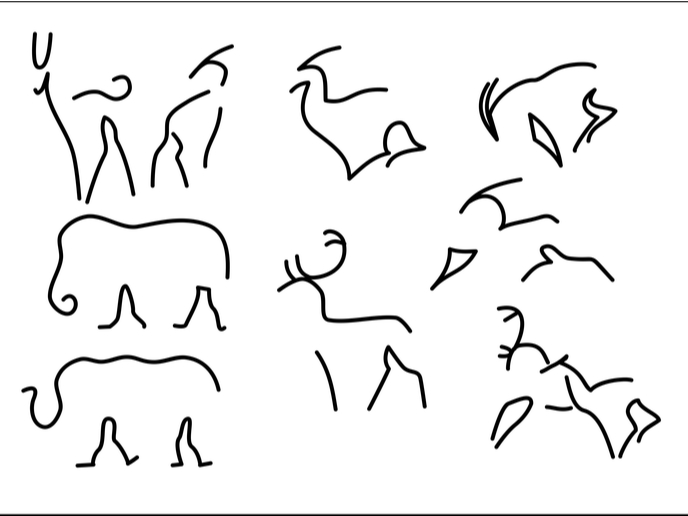Rock paintings give a glimpse into ancient Amazonian civilisation
A vast expanse of rock paintings hidden deep in the Amazonian forest is throwing light on people and animals from 12 500 years ago. Dubbed the Sistine Chapel of the ancients, the rock art was discovered during surveys carried out in the Colombian Amazon. Now, researchers supported by the EU-funded LASTJOURNEY project are studying these paintings to tell the story of the early colonists of the Amazon basin’s north-western boundary. The illustrated cliff faces are tucked away in a mountain region called the Serranía de la Lindosa located on the riverbank of the Guayabero River in the Republic of Colombia. The site is so remote that it requires a 2-hour drive from the city of San José del Guaviare followed by a 4-hour trek on foot to reach it. The rock paintings stretch across almost 13 km and in places so high that they can only be viewed with drones. “We’re talking about several tens of thousands of paintings. It’s going to take generations to record them … Every turn you do, it’s a new wall of paintings,” said Prof. José Iriarte of LASTJOURNEY project coordinator University of Exeter in an article published in ‘The Guardian’. Prof. Iriarte had previously also received EU funding for his research in pre-Columbian land use and in unmanned aircraft technology for rainforest sustainability through the projects PAST and FUTURES, respectively.
Depictions of ancient humans, animals and plants
The spectacular rock art most likely represents the earliest artistic expressions of the ancient Amazonian inhabitants. The paintings have a reddish terracotta colour and portray humans, plants and animals. There are forest animals such as birds, fish, horses, lizards and turtles. Images of now-extinct megafauna include the palaeolama, a member of the camel family, the mastodon, a distant relative of the modern elephant, and giant sloths. “The pictures are so natural and so well made that we have few doubts that you’re looking at a horse, for example. The ice-age horse had a wild, heavy face. It’s so detailed, we can even see the horse hair. It’s fascinating,” observed Prof. Iriarte, who is leading the British-Colombian project team. “It’s interesting to see that many of these large animals appear surrounded by small men with their arms raised, almost worshipping these animals,” he added. There are also paintings portraying people dancing and holding hands, as well as depictions of wooden towers, which may explain how those early artists could reach so high up the cliff faces. Referring to the images of trees and hallucinogenic plants seen on the cliff faces, Prof. Iriarte explained: “For Amazonian people, non-humans like animals and plants have souls, and they communicate and engage with people in cooperative or hostile ways through the rituals and shamanic practices that we see depicted in the rock art.” The first data obtained from the LASTJOURNEY (The End of the Journey: The Late Pleistocene-Early Holocene Colonisation of South America) study was published in the journal ‘Quaternary International’ in early 2020. The results of this research will help to increase our understanding of late Pleistocene/early Holocene human colonisation in South America and the repercussions of interactions between people and the environment for this part of the world. The PAST (Pre-Columbian Amazon-Scale Transformations) project ended in 2018 and FUTURES (Forefront UAV Technology for Underpinning Rainforest Environmental Sustainability) in 2019. For more information, please see: LASTJOURNEY project website PAST project website FUTURES project
Keywords
LASTJOURNEY, PAST, FUTURES, rock painting, rock art, Amazon, animal, South America



